How to Figure Out Your Color Season
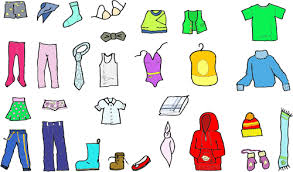
In the fashion world, there are different color palettes that coordinate with the four seasons. Each person has a color palette that best suits their features. Of course, people can wear whatever color they like, but this can be a general guide for finding colors that look the best on them.
Color matching was started with Carole Jackson’s popular book, Color Me Beautiful, published in 1973, which gave women a guide on how to color match based on skin tone, hair color, and eye color. This popularized the seasonal color palettes and even created the color matching profession, where people can get a professional color analysis.
Color analysis is based on three things: hue, contrast, and chroma.
Hue is the undertones of your skin. There are three prominent undertones: warm, cool, and neutral. Cool-toned undertones have blue, red, or pink tones, while warm-toned skin looks more yellow, peachy, or golden. And then neutral-toned skin is a mix of both warm and cool undertones, which is why some of the tests listed later might have conflicting answers. Also, warm tones are likely to tan easily while cool-toned skin might burn easily or not tan well.
Contrast is how much your features contrast with your skin tone. For example, if you have dark features (dark hair, dark eyes) and pale skin, you have high contrast. If you have all light features, you have light contrast. And anything in between is a medium contrast.
Meanwhile, chroma is how saturated a color is. High chroma is “bright.” Features have high saturation which also means you have high contrast. High chroma means you can wear bright colors without looking washed out. Low chroma is “muted.” Features have a low saturation and a low contrast. Low chroma means you can wear neutral colors without looking washed out.
To find your best color palette, here’s a general guide on finding which season you are:
Figure out your hue
1. Look at your veins
The colors of your veins can help indicate if you are cool-toned or warm-toned. It’s best to look at the veins on your hands and wrists. If they are blue/purple, your skin is cool-toned, but if they are green, your skin is warm-toned.
2. Jewelry test
Most people have a preference for either silver or gold jewelry. If you think gold jewelry compliments your skin better, then you have warm undertones, and if you like silver better, then you have cool undertones.
Figure out your contrast
1. Dark features that contrast against your skin tone → High contrast
2. Light features that are similar to your skin tone → Light contrast
3. Medium dark features and slightly lighter skin tone → Medium contrast
Figure out your chroma
1. Warm and light → bright
2. Warm and dark → muted
3. Cool and dark → bright
4. Cool and light → muted
Figure out your season
Winter – High contrast, cool undertones, and bright chroma.
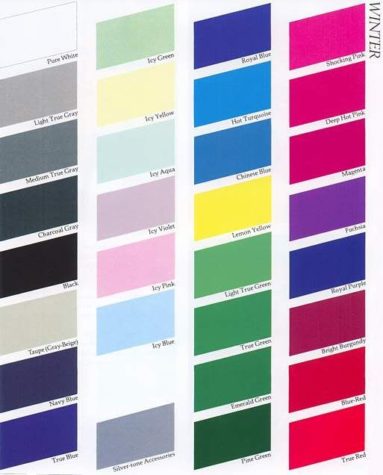
Spring – Moderate or light contrast, warm undertones, and muted chroma.
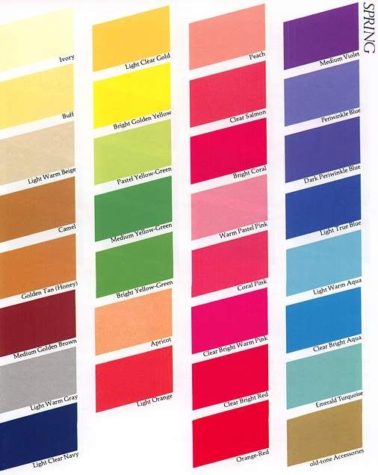
Summer – Moderate contrast, cool undertones, and muted chroma.
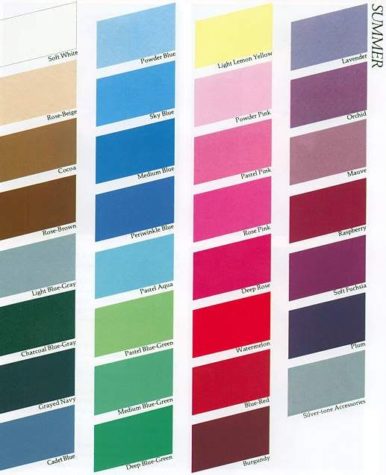
Autumn – Light contrast, warm undertones, and bright chroma.
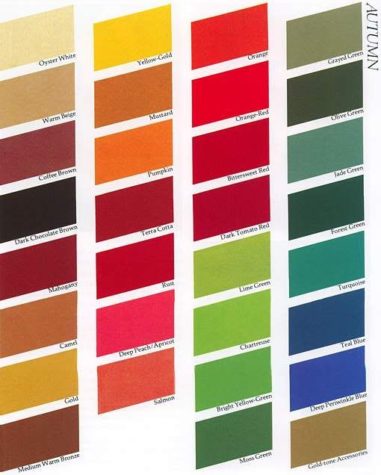
If you’re still not sure:
1. Eye Pattern Test
This one requires another person. There are certain patterns in the iris that can determine which season you are. I’ve included a chart below. Have another person look at your eyes and figure out which iris pattern you have.
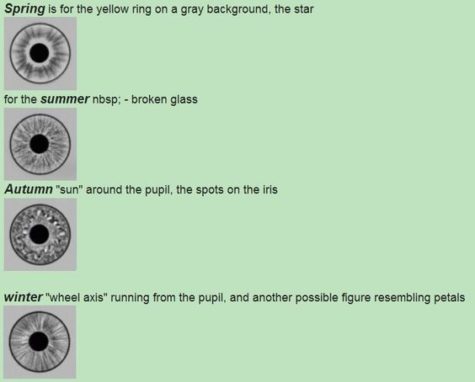
And, if you don’t seem to “fit” any of these seasons, there are actually twelve, more specific, seasons you could choose from, but that’s a little too much to go into. But hopefully, you were able to identify your season, and now you know what colors will make you look the best!


Trisha • Jun 17, 2024 at 16:18
Unfortunately, you got things the wrong way around – spring is bright and autumn is muted, both warm!